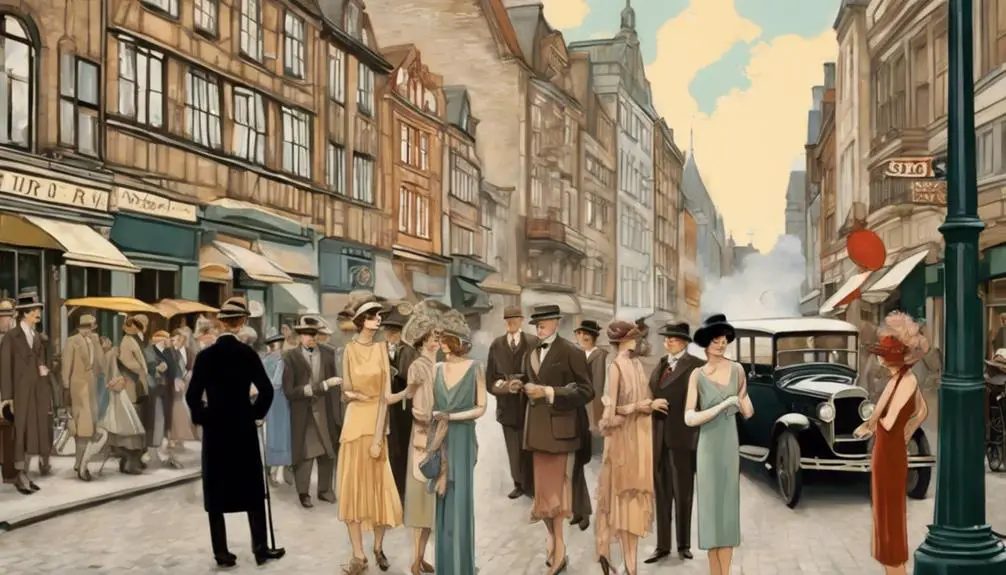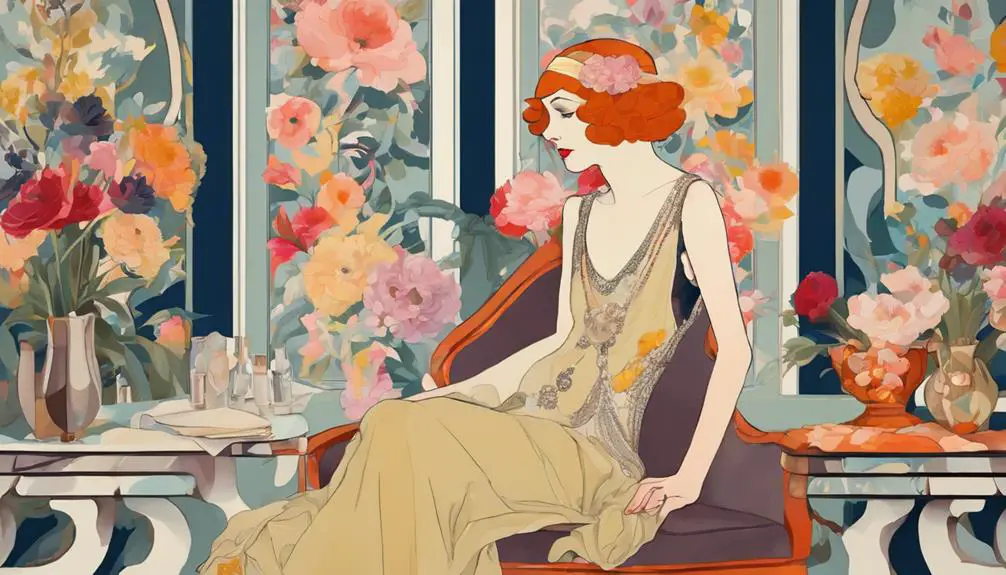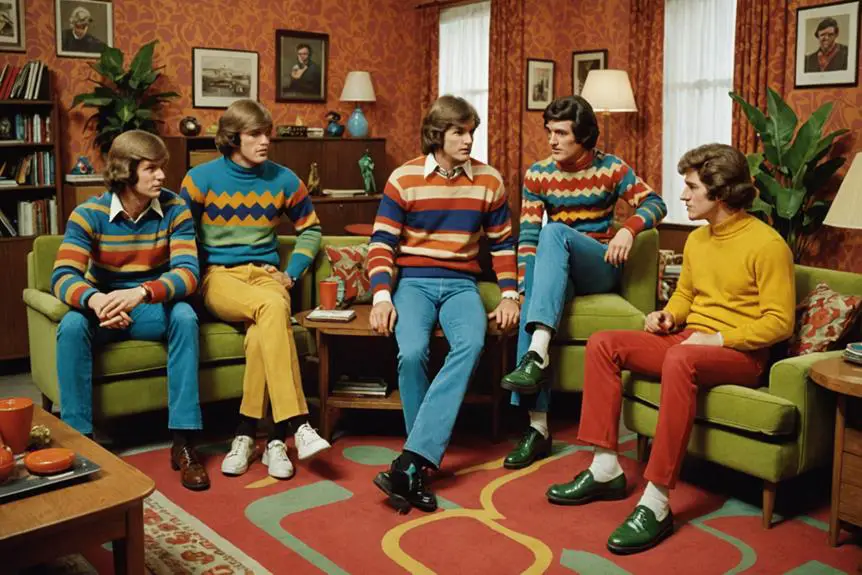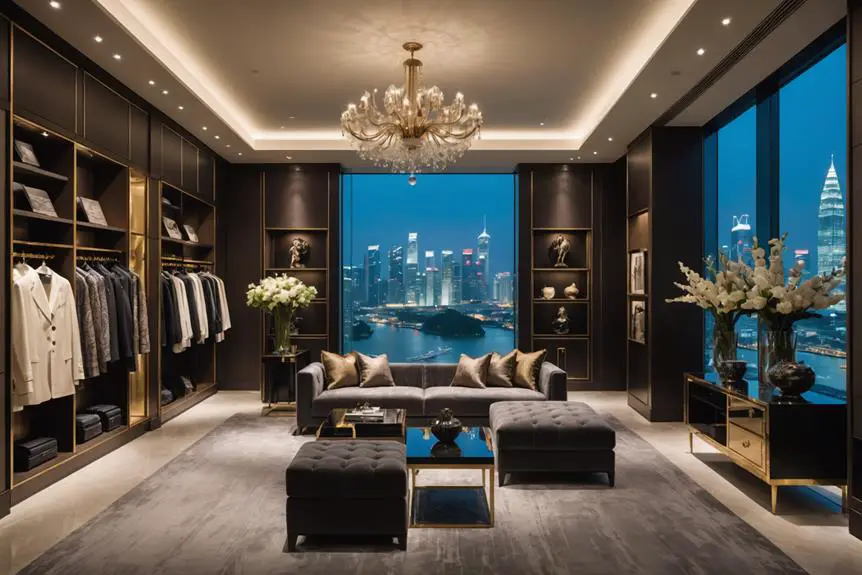The outfits in "The Danish Girl" flutter like delicate butterflies, each one marking a pivotal moment in Lili Elbe's transformation. As you observe her evolving wardrobe, you can't help but wonder how these garments reflect her internal struggle for identity. From structured suits to flowing gowns, each piece tells a story of self-discovery and societal expectations. What role does Gerda Wegener play in shaping Lili's fashion choices, and how do these choices ultimately challenge the norms of their time? The interplay between costume and character invites a closer examination of deeper themes at stake.
Historical Context of Fashion

The 1920s ushered in a revolutionary shift in women's fashion, moving away from the stiff, restrictive styles of the Edwardian era. This decade marked a significant change towards more liberated and fluid designs, reflecting the evolving role of women in society after World War I.
Designers like Chanel and Lanvin popularized shapeless silhouettes and chemise dresses that prioritized comfort and freedom over traditional corsetry. As you explore the fashion of this era, you'll notice the use of lighter fabrics such as chiffon, silk, and velvet, which allowed for expressive feminine clothing that danced with movement.
Vintage clothing from this period often showcases unique detailing, making it a fascinating area of study for enthusiasts of fashion history, especially when examining vintage label identification.
Accessories played a essential role too, with cloche hats, long gloves, and Gatsby-inspired bags becoming fundamental components of the style, enhancing the overall aesthetic.
The Art Deco movement further influenced 1920s fashion, infusing clothing and accessories with geometric patterns and motifs that expressed modernity and sophistication.
For those interested in historical accuracy in costuming, understanding these elements is significant. The fashion of the 1920s isn't just about the clothes; it's a vibrant reflection of the cultural shifts that defined the period, making it an exciting topic for any fashion enthusiast!
Character Transformation Through Costumes
Costumes frequently serve as powerful tools for character transformation in film, and "The Danish Girl" exemplifies this beautifully. Through the visionary work of costume designer Paco Delgado, you witness Lili's journey from Einar Wegener, a man constrained by societal expectations, to a vibrant transgender woman embracing her true self.
Initially, Einar's high-collared suits and dark color palette symbolize his discomfort and the restrictions of his identity. However, as Lili emerges, her wardrobe shifts dramatically, featuring softer silhouettes and lighter colors that celebrate her femininity.
Delgado enhances this transformation with fluid fabrics like chiffon and silk, moving away from the restrictive styles of the Edwardian era. Key moments, such as Lili's stunning first ball dress, visually capture her self-discovery and liberation from her past identity.
Accessories play a significant role, too; scarves represent Lili's struggle with masculinity while adding a chic flair to her outfits. Every costume carefully reflects Lili's evolving gender identity, making her character transformation not just a visual spectacle but an emotional journey that resonates deeply with the audience.
This thoughtful design approach invites you to celebrate Lili's bravery and authenticity.
Key Costume Design Elements

Numerous key elements in Lili's costume design highlight her transformative journey in "The Danish Girl." From her initial dark, tailored menswear, which reflects her internal struggle, to the flowing, colorful fabrics that accompany her self-acceptance, each piece serves a distinct purpose.
Lili Elbe's shifting wardrobe showcases a remarkable evolution from classic Edwardian fashion to the more liberated styles of the 1920s. Initially, her outfits—shades of blue, gray, and black—feature waistcoats and pinstripe shirts, emphasizing her gender identity battle. However, as she embraces her femininity, the costumes shift to softer silhouettes crafted from luxurious chiffon, silk, and velvet.
Accessories play an essential role, too, with hats, gloves, and Gatsby-inspired bags enhancing her feminine aesthetic. Notably, Gerda's fashion mirrors Lili's evolution, as both characters favor similar outerwear, like Opera coats, while sharing a color palette of blues and browns adorned with Art Deco prints.
The film's costume design cleverly draws inspiration from 1920s fashion icons like Lanvin and Chanel, focusing on shapeless silhouettes that allow for fluid movement, effectively capturing Lili's journey toward self-discovery and acceptance amidst historical inaccuracies.
Influential Fashion Designers
Fashion designers from the 1920s considerably shaped the visual narrative in "The Danish Girl." Influences from icons like Jeanne Lanvin and Coco Chanel are evident in the film's outfits, which prioritize theatricality and fluid silhouettes, moving away from the restrictive corsets of previous eras.
The wardrobe of Lili Elbe, played by Eddie Redmayne, showcases stunning chemise dresses that epitomize 1920s fashion, with their softer lines and a departure from the high-collared styles of the Edwardian period.
Costume designer Paco Delgado skillfully incorporated elements from the designs of Callot Soeurs, known for their flat-chested, shapeless aesthetic, creating a visually stunning representation of Lili's evolving identity. The costumes also feature exquisite floral embroidery and lace trimmings, echoing the luxurious craftsmanship characteristic of early 20th-century fashion.
Additionally, Gerda Wegener's fashion choices parallel Lili's transformation, as both characters wear shared outerwear styles that highlight the Art Deco influence prevalent during that vibrant decade.
The attention to detail in these outfits not only enhances the film's authenticity but also celebrates the revolutionary spirit of 1920s fashion, allowing viewers to experience the journey of Lili and Gerda in a truly immersive way.
Gerda Wegener's Fashion Statement

Gerda Wegener's wardrobe in "The Danish Girl" vividly captures the essence of 1920s Parisian style, reflecting her artistic soul and personal evolution. Her fashion showcases a stunning blend of Parisian flair and Art Deco influences, showcasing how her outfits mirror the vibrant artistic community of the time.
Essential colors like blues and browns dominate her attire, with dropped-waist chemise dresses and chic short-hem wrap coats that spotlight contemporary trends. The attention to detail in her clothing parallels the meticulous nature of identifying vintage fashion, such as the importance of examining label tags for authenticity and dating.
As her journey unfolds, you'll notice how Gerda's outfits often align with Lili's evolving style, particularly through their shared outerwear, like elegant Opera coats, which emphasize their close bond and collaborative spirit. Accessories play a significant role, too; hats, gloves, and Gatsby-inspired bags elevate her looks, solidifying her status as a fashionable artist in the bustling Parisian scene.
The meticulous costume design by Paco Delgado highlights Gerda's transformation from a liberated woman into a devoted wife, illustrating how societal expectations shape her personal style.
Through her fashion, you can feel the emotional weight of her journey, making Gerda Wegener not just a character but a vibrant symbol of the era's artistic spirit.
Themes of Gender and Identity
The exploration of gender and identity in "The Danish Girl" deeply intertwines with Gerda Wegener's narrative, as Lili Elbe's journey from Einar Wegener showcases the intricate emotional landscape of self-discovery. Lili's story as a transgender woman is a poignant reflection of the struggles many face in finding their true selves. Throughout the film, you witness Lili's emotional challenges, as societal norms clash with her desire for authenticity.
As artist Lili embraces her femininity, her evolving wardrobe symbolizes her transformation, moving away from restrictive menswear to flowing dresses that embody her identity. Each outfit becomes a powerful statement of liberation, emphasizing the connection between gender identity and personal expression. The film also critiques traditional gender norms, shining a light on the societal pressures that shape Lili's journey.
Moreover, Gerda's role complicates the narrative, as she navigates her identity as both a partner and an artist supporting Lili. The contrast between Denmark's conservative setting and Paris's more progressive environment illustrates the broader themes of gender fluidity, making this story not just about Lili but a universal exploration of identity and acceptance.
Frequently Asked Questions
What Was the Point of the Danish Girl?
The point of "The Danish Girl" is to illustrate Lili's identity exploration amid emotional turmoil, highlighting societal acceptance and gender transformation. It emphasizes personal relationships and artistic expression within a vital historical context for transgender individuals.
Was Danish Girl Based on a True Story?
Yes, "The Danish Girl" is based on a true story. It explores historical accuracy and character development while reflecting societal impact, transgender identity, and the emotional journey of Lili Elbe, showcasing its profound cultural significance.
How Many Oscars Did the Danish Girl Win?
You'll find "The Danish Girl" won one Oscar for Best Supporting Actress, amidst four nominations. Its artistic representation sparked discussions on cinematic themes, character development, and historical accuracy, influencing film reception and costume design appreciation.
What Country Is the Danish Girl From?
You're exploring Danish culture, where the film adaptation highlights gender identity and fashion influence. It captures historical context, artistic representation, and societal impact, showcasing Denmark's evolving attitudes toward gender in the early 20th century.



